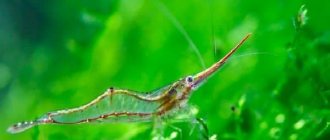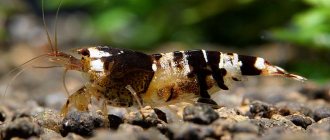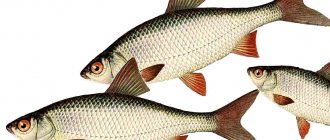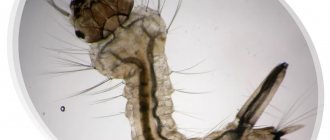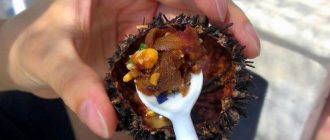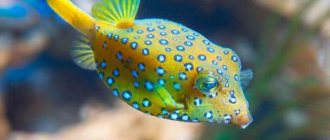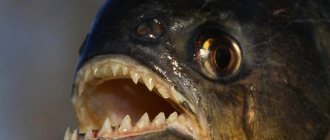Shrimp
are one of the most healthy foods. These crustaceans are distributed throughout all seas and oceans, they can even be found in fresh water bodies. Unique arthropods are perceived, first of all, as a nutritious delicacy, an ingredient in various dishes, but shrimp themselves are very unusual and even mysterious inhabitants of the underwater world, with a special structure of the body. Many lovers of scuba diving in tropical waters have the opportunity to monitor their behavior - if you move the algae, the shrimp jump out, like grasshoppers from ordinary grass.
Origin of the species and description
Shrimp are crustaceans from the order Decapods, there are 250 genera and more than 2000 different species of these creatures. Decapod shrimp are higher crustaceans; unlike other multicellular organisms, their cardiac muscle has a symplastic structure. Like all arthropods, they belong to the animal kingdom; they have a chitinous exoskeleton, which limits body growth and therefore the animal must periodically shed it - undergo molting.
Video: Shrimp
There are about a hundred species of shrimp that are subject to commercial fishing, some are cultivated on special shrimp farms, there are several species that are successfully kept even in home aquariums. Many species of these crustaceans are characterized by protandric hermaphroditism - during their lives they are able to change their sex. This unusual phenomenon of separate appearance of opposite sexual characteristics in hermaphrodite creatures is quite rare.
Interesting fact: Shrimp meat is especially rich in protein and high in calcium, but is low in calories; however, shrimp, like all other arthropods that live in the seas, is prohibited from being eaten in Judaism. There are disagreements about the permissibility of eating these crustaceans in Islam.
Diseases
Like all inhabitants of artificial reservoirs, crustaceans are susceptible to various kinds of diseases. Shrimp diseases occur due to the penetration of parasites into the aquarium, which settle in the gills of pets and other parts of the body. Unfortunately, it is impossible to cure this disease, and the pet dies.
It should be noted that even careful care and monitoring of water parameters does not exclude shrimp diseases - crustaceans can contract fungal diseases. They are not as dangerous as parasitic and viral ones, but they can also be fatal. Having noticed disturbing symptoms and unusual behavior of shrimp in the aquarium, infected pets should be removed to the aquarium, the water in the tank should be replaced and a specialist should be consulted.
Prolonged immobility of shrimp is a sign of poisoning. You should immediately change 25-50% of the water. If this does not help immediately, then in the coming days make a replacement in the same volume again.
Long immobility of shrimp is a sign of poisoning
Before introducing new individuals into the aquarium, they must be kept in a separate container in quarantine for at least 14 days.
Appearance and features
The color and size of a shrimp depends on its type, but all these crustaceans have a body covered on the outside with a continuous, durable layer of chitin, which they change as they grow.
The mollusk has an elongated body, flattened on the sides, which is divided into the abdomen and cephalothorax. The cephalothorax, in turn, has an unusual protrusion - the rostrum, on which you can see teeth of various shapes depending on the type of crustacean. The color of shrimp can be from gray-green to pink and even blue, with characteristic stripes and spots, the size ranges from 2 to 30 centimeters. The eyes of shrimp consist of a large number of facets, their number increases with age. Their vision is mosaic and for this reason crustaceans see well only at a short distance of up to several centimeters. However, the eyes are responsible for the production of special hormones that regulate:
- change in body color;
- height, frequency of molting;
- metabolism, rate of calcium accumulation;
- order of pigment arrangement.
The anterior antennae and antennae are the organ of touch. The abdomen of shrimp is equipped with five pairs of legs - pleopods, with the help of which the animal swims. The female carries eggs on pleopods, and by moving, they wash and clean them. The last limbs form a wide fan together with the tail. By bending its abdomen, this crustacean is able to quickly swim back when in danger. The shrimp has three pairs of jaws on its thoracic limbs, with their help it collects food and brings it to the mandibles, the bristles of which determine whether to eat it or not.
The front pair of legs of the mollusks are turned into claws. Shrimp use them to protect themselves and grab large prey. In males they are usually more developed. Walking legs on the chest are interesting because the left and right legs of each pair always move independently of each other. The shrimp's gills are hidden by the edge of the shell and connected to the thoracic limbs. Water is driven through the cavity of the gills using a large blade located on the hind jaws.
Control using a feeder
The use of special feeders helps to maintain the cleanliness of the aquarium. They can be glass, metal and plastic. You can use suitable available equipment.
The simplest design consists of a transparent container like a plate and a long tube placed in it, one end of which is above the surface of the water. Food is poured through a tube. This design also makes it easy to control the amount of food.
Adults can eat this way; for young animals it is recommended to use powder.
Where does the shrimp live?
Shrimp, playing a vital role in the ecosystem of the oceans and seas, have settled almost everywhere.
More than 2000 species of these crustaceans can be divided into the following subspecies:
- freshwater - found in Russia, the waters of Australia, South Asia;
- cold-water shrimp are the most common species that lives in the North Sea, Baltic Sea, Barents Sea, near the coast of Greenland, Canada;
- warm-water mollusks - in the southern oceans and seas;
- brackish - in salt waters.
Chilean crustaceans have settled along the entire South American coast, they are found in the Black Sea and the Mediterranean Sea, and king shrimp are found in the Atlantic Ocean.
When comfortable conditions are created, some freshwater and warm-water species are successfully kept in home aquariums. Many of them were bred artificially and have an unusual color that does not occur in nature. Interesting fact: Cold-water shrimp are able to reproduce only in their natural environment and are not amenable to artificial cultivation. Crustaceans feed only on environmentally friendly plankton, which determines the high quality and value of their meat. The most valuable representatives of this subspecies are the northern red and red comb shrimp, and the northern chilim.
Now you know where the shrimp are found. Let's see what they eat.
Reviews
Polina Romanovna, 41 years old, Ufa
I started keeping shrimp quite recently and decided to put them in an aquarium with snails and fish. It seemed to me that all aquatic livestock eat approximately the same, so I tried to feed the shrimp all the fish food, so as not to buy anything separately. In the end, I discovered that they eat algae and do not even touch the fish food. The shrimp stopped growing completely, probably because they didn’t get the necessary vitamins, and recently I noticed that large fish were looking at them suspiciously. Thinking that the mustachioed babies would be easy prey, I decided to transplant them into a separate container with water and began feeding them dry food, combining it with natural food. I hope that my little ones will grow up soon.
Tatyana Vasilievna, 68 years old, Astrakhan
For a long time I asked my son to buy an aquarium - fish calm me down, lift my spirits, and are simply interesting to watch. But instead of fish, we decided to launch a dozen shrimp, which began to reproduce successfully. Now there are more than twenty of them, and I would not say that they receive an excessive amount of food. They attack in their small flock almost everything they see: any vegetables, greens. That's why I stopped buying food to save money, although I never ate much shrimp. I conclude: these are creatures that do not require special feeding habits and are really very cute.
Viktor Romanovich, 34 years old, Ufa
As a teenager, I kept an aquarium with fish, which my mother looked after. After I started living alone, caring for them became simply unbearable: dirty water - the fish die, you can’t feed them on time - the skates also throw them away. I decided to get unpretentious creatures, shrimp of the Cherry variety, which received this name for their red color. My inhabitants are really unpretentious and eat almost everything - from algae to small pieces of vegetables. I don’t buy special food, I feed it rarely, and they continue to exist, and of the 8 shrimp, all remained alive. I'm sure there will be a replenishment soon.
What does a shrimp eat?
Shrimp are scavengers; their diet is based on almost any organic remains. In addition, crustaceans love to feast on plankton, succulent algae leaves, they can hunt young small fish, and even climb into fishermen’s nets. Shrimp search for food using their sense of smell and touch, turning their antennae and antennae in different directions. Some species actively dig up the ground in search of vegetation, while others run along the bottom until they stumble upon some food.
These mollusks are practically blind and are able to distinguish the silhouettes of objects only at a distance of a few centimeters, so the sense of smell plays the main violin.
The shrimp attacks its prey sharply, grabbing it with its front pair of legs, and holds it until it subsides. Developed jaws or mandibles gradually grind food, which can take up to several hours. Interesting fact: At night, all shrimp lighten, becoming translucent, and in daylight they darken, and also quickly change their color depending on the background.
For aquarium shrimp, specially prepared formulations or ordinary boiled vegetables are used as food. Not a single crustacean will deny itself the pleasure of snacking on the remains of its fellow creatures or any aquarium fish.
Features of character and lifestyle
Shrimp are very active but secretive creatures. They constantly move along the bottom of reservoirs in search of food and are able to cover fairly large distances; mollusks also crawl along the leaves of underwater plants, collecting carrion on them. At the slightest danger, crustaceans hide in thickets, soil, among stones. They are cleaners and play an important role in the ocean ecosystem. They attack their relatives extremely rarely and only in cases of severe hunger in the absence of a sufficient amount of usual food.
They skillfully maneuver thanks to walking, swimming legs located on the chest and abdomen.
With the help of tail stalks, shrimp are able to jump sharply to a fairly large distance, quickly move backwards and thereby scare off their enemies with clicks. All shrimp are solitary, but, nevertheless, crustaceans are found mainly in large groups. Some species are active at night, while others hunt only during daylight hours. Interesting fact: The genital organs and heart of the shrimp are located in the head area. The urinary and digestive organs are also located here. The blood of these crustaceans is normally light blue in color, but with a lack of oxygen it becomes colorless.
Social structure and reproduction
On average, a shrimp lives from 1.6 to 6 years, depending on the species.
Shrimp are bisexual creatures, but male and female glands form at different times. First, upon the onset of puberty, the young shrimp becomes a male and only in the third year of life changes sex to the opposite. During puberty, the female begins the process of egg formation and at the initial stage they resemble a mass of yellow-green color. When fully ready to mate, the female releases special substances, pheromones, by which the male finds her. The entire mating process takes a matter of minutes and after some time the eggs appear. Interestingly, females hold unfertilized eggs on the hairs of the abdominal legs, and then carry the offspring with them until larvae emerge from the eggs. Depending on the water temperature, the larvae develop inside the eggs within 10-30 days, going through 9 to 12 stages of embryogenesis. First, the jaws are formed, then the cephalothorax. Most of the larvae die during the first day and reach maturity by no more than 5-10 percent of the entire brood. In artificial conditions, the survival rate is three times higher. The larvae themselves are inactive and are not able to search for food on their own.
Natural enemies of shrimp
A huge number of shrimp die at the larval stage. Whale sharks, whales and many other planktivores constantly feed on these crustaceans. They are often preyed on by other molluscs, seabirds, bottom-dwelling fish and even mammals. Shrimp have no weapons against their enemies; they can only try to escape in case of danger or hide among the leaves of plants; in extreme cases, crustaceans can try to scare their enemy and, taking advantage of his confusion, sneak away. Shrimp have camouflage colors and are able to imitate the color of a sandy bottom, and also, if necessary, quickly change color depending on the environment and type of environment.
Shrimp are also subject to industrial fishing.
These mollusks are caught in huge quantities in the Atlantic Ocean and Mediterranean Sea. Every year, more than 3.5 million tons of shrimp are harvested from salt waters using bottom trolling, completely destroying the crustacean's habitat for up to four decades. Interesting fact: There is no species under the scientific name “king” shrimp, which is the name of all large species of these arthropods. The largest species is the black tiger shrimp, which can reach 36 cm in length and weigh up to 650 grams.
Population and species status
Despite the huge number of natural enemies, the low percentage of larval survival and active fishing, the status of the species is currently stable and there is no fear that this species of crustacean will disappear completely.
Shrimp have incredible fertility and are able to quickly restore their population - this is what saves them from complete extermination. There is a theory that shrimp can independently regulate their population:
- with excessive growth and an ensuing food shortage, they begin to bear offspring less frequently;
- with a significant drop in numbers, mollusks reproduce much more actively.
Most of the extra large and even giant shrimp, reaching 37 centimeters in length, are grown on shrimp farms.
Due to the peculiarities of the functioning of farms and the specific diet, the meat of these crustaceans is filled with various chemicals. The highest quality shrimp are those that have grown naturally in clean, cold waters. Interesting fact: In summer and spring, the shores of Japan glow in the dark - this is due to luminescent shrimp that live in the sand and become visible during low tides.
The noise of snapping shrimp can disrupt the operation of submarine sonars - the hydroacoustic will only hear a continuous noise curtain. Shrimp is something that is actively eaten and bred in aquariums, but very little is known about this strange creature that plays an important role in the ecosystem of the world's oceans. It is not just a delicacy or an ingredient in popular dishes, but a unique organism that surprises and delights with its characteristics.
How often to feed
Shrimp are constantly looking for food for themselves. At the same time, overfeeding negatively affects their condition.
The main rule is that a single feeding should be such that the pets can eat the food they receive in five minutes. There should be no leftovers.
You need to feed crustaceans at the same time. The recommended interval is once every one or two days. It is best to choose the time for the first feeding an hour after turning on the light. During this period, shrimp are most active.
You need to feed crustaceans at the same time
Feeding frequency is affected by:
- presence of other inhabitants in the aquarium;
- flock size;
- number of plants in the aquarium.
When near fish, separate food can be used very rarely. These crustaceans may be completely satisfied with leftover food, plants and algae. In addition, they love the film that forms on the surface of the water. It contains microorganisms that are an excellent treat for them.
Nitrogen impurities have a bad effect on the health of underwater inhabitants. The copper content (often included in medications) leads to the death of the entire flock. Before feeding shrimp, you must carefully read the composition of the selected food.
If the shrimp are kept separately from the fish, their feeding should be especially thought out. You need to monitor not only the frequency, but also the completeness and balance of the incoming food. The diet should include plant and protein foods.
